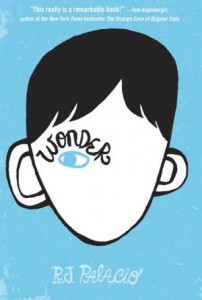 This weekend I’m headed to Montpelier, Vermont for my final residency and graduation from the Vermont College of Fine Arts program in Writing for Children and Young Adults. One of my MFA requirements is to deliver a lecture on an issue related to the craft of writing. My lecture, titled “Dimensions of Difference: Applying the Lessons of Cross-Cultural Writing to Writing About Characters with Disabilities, offers ten tips for those seeking to include characters with disabilities in their middle grade and young adult fiction. I illustrate each tip with examples from classic and contemporary MG and YA novels.
This weekend I’m headed to Montpelier, Vermont for my final residency and graduation from the Vermont College of Fine Arts program in Writing for Children and Young Adults. One of my MFA requirements is to deliver a lecture on an issue related to the craft of writing. My lecture, titled “Dimensions of Difference: Applying the Lessons of Cross-Cultural Writing to Writing About Characters with Disabilities, offers ten tips for those seeking to include characters with disabilities in their middle grade and young adult fiction. I illustrate each tip with examples from classic and contemporary MG and YA novels.
For one of my tips, I urge writers to include main characters with disabilities as well as secondary characters and to avoid “second fiddle” characterizations. British scholar and critic Pat Thomson describes “second fiddle” characters as those that “exist only to promote the personal development of the main, able-bodied character.” I ask my listeners to consider whether the secondary character with disabilities changes and grows along with the non-disabled main character.
After writing the lecture and putting together the visual elements of the presentation, I had the pleasure to read R. J. Palacio’s new middle grade novel Wonder (Knopf, 2012). It is one of the best novels I’ve read this year, the story of an 11-year-old boy, Auggie Pullman, who has severe craniofacial abnormalities and has been homeschooled but now attends a private school for the first time in his life. With Auggie as the focus, Wonder does not suffer from the “second fiddle” characterization, but Palacio has done a brilliant job of showing how a young person with a disability changes the lives of those around him while developing the courage and confidence to thrive in an often-ignorant or hostile world.
The novel follows Auggie’s fifth grade year at Beecher Prep, beginning with his summer orientation in which the three kids touring him around the school deal with with their own issues leading to a less-than-welcoming introduction. On the first day of school, only one other child, a girl named Summer, eats lunch with Auggie. Auggie has to force himself to come to school because he knows the other children avoid him because of his appearance. He doesn’t want to disappoint his loving parents (his mother is a former beauty queen from Brazil) and he wants to be a part of the world outside his home. His older sister sometimes resents being neglected because of his many hospitalizations, but she also wants to protect him. While Auggie is the principal narrator, the author also presents the perspectives of his sister, his sister’s estranged best friend, Summer, and Jack Will, one of the classmates who gave Auggie the orientation tour and who struggles the most with his desire to do the right thing versus wanting to be part of the popular crowd.
This powerful and inspiring novel explores issues of bullying, acceptance, and having the courage to show up every day regardless of what other people think.
While my lecture is geared to writers without disabilities, I would like to see more writers with disabilities tell their stories from the inside. Of course, that may mean going public with disabilities that have been hidden. Several weeks ago, blogger Maggie Desmond-O’Brien wrote about the growing number of books featuring characters with mental illness—some by insiders telling stories based on their own lives, others by outsiders looking in. Maggie’s blog post, “Book Crazy: Mental Illness in YA and Why It Matters” (http://maggiesbookshelf.blogspot.com/2012/06/book-crazy-mental-illness-in-ya-and-why.html) offers a valuable discussion of the types of novels that deal with mental illness and recommended titles for each category, as well as an important argument for “why it matters.”
3 comments for “Focus on the Disability Experience: A Review of Wonder”